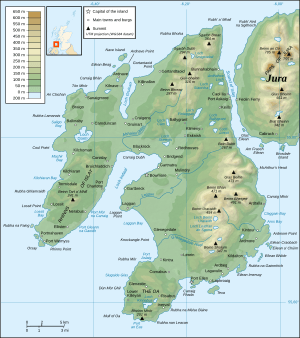John Campbell of Mamore facts for kids
John Campbell (born around 1660 – died April 9, 1729) was an important Scottish politician. He came from a noble family and was known for being a Whig, which was a political group at the time. He served in the Scottish Parliament before Scotland and England joined together, and then in the British Parliament.
Early Life and Family
John Campbell was the second son of Archibald Campbell, 9th Earl of Argyll. His mother was Lady Mary Stewart. He went to school in Glasgow in 1676.
His father was involved in a rebellion against King James II. Because of this, John Campbell faced difficulties. He lost some of his rights and had to leave the country for a while. He also often struggled with money.
From 1689 to 1690, he served as a Captain in a military regiment. In 1692, he married Elizabeth Elphinstone. She was the daughter of John, the 8th Lord Elphinstone.
Political Career
John Campbell was a representative for Argyllshire in the Parliament of Scotland from 1700 to 1707. He also worked as the "surveyor of the King's works in Scotland" from 1705 to 1717. This meant he oversaw royal building projects.
He supported the Union that joined Scotland and England in 1707. After the Union, he was chosen to represent Scotland in the new British Parliament.
In the 1708 election, he became a member of parliament (MP) for Dunbartonshire without anyone running against him. He was re-elected easily in 1710 and was known as a Whig. He was often absent from Parliament and didn't make a big impact there. He was re-elected again in 1713 and 1715. In 1716, he voted for a law that changed how often elections were held.
Later, he disagreed with the government and lost his job in 1717. However, in 1719, his relative, the Duke of Argyll, returned to power. John Campbell then started supporting the government again.
In the 1722 election, he lost his seat in Dumbarton. But he successfully challenged the result and got his seat back in 1725. He stayed an MP until the 1727 election. After that, he let his son, John, take over his seat in Parliament.
In 1725, people in Glasgow were very upset about a new tax on malt, which was used to make beer. This tax made beer more expensive. A crowd gathered outside John Campbell's mansion in Glasgow. Soldiers were called in, and sadly, some people were killed or hurt. Many people were arrested. The city of Glasgow had to pay John Campbell £9000 as a result. With this money, and money from selling his Glasgow mansion, he bought the entire Isle of Islay.
Later Life and Family
John Campbell passed away on April 9, 1729. He and his wife had several children, including:
- John Campbell, 4th Duke of Argyll
- Charles Campbell
- Neil Campbell
- William Campbell (MP)
- Mary Campbell, who married James Primrose, 2nd Earl of Rosebery
- Anne Campbell, who married Archibald Edmonstone
- Isabella Campbell, who married Captain William Montgomery
- Jean Campbell, who married Captain John Campbell
- Primrose Campbell, who married Simon Fraser, 11th Lord Lovat
- Elizabeth Campbell
Trivia
John Campbell's mansion in Glasgow, called Shawfield, was built in 1711. It was later bought by a bank in 1776. The bank tore it down in 1826 to build a new bank.


